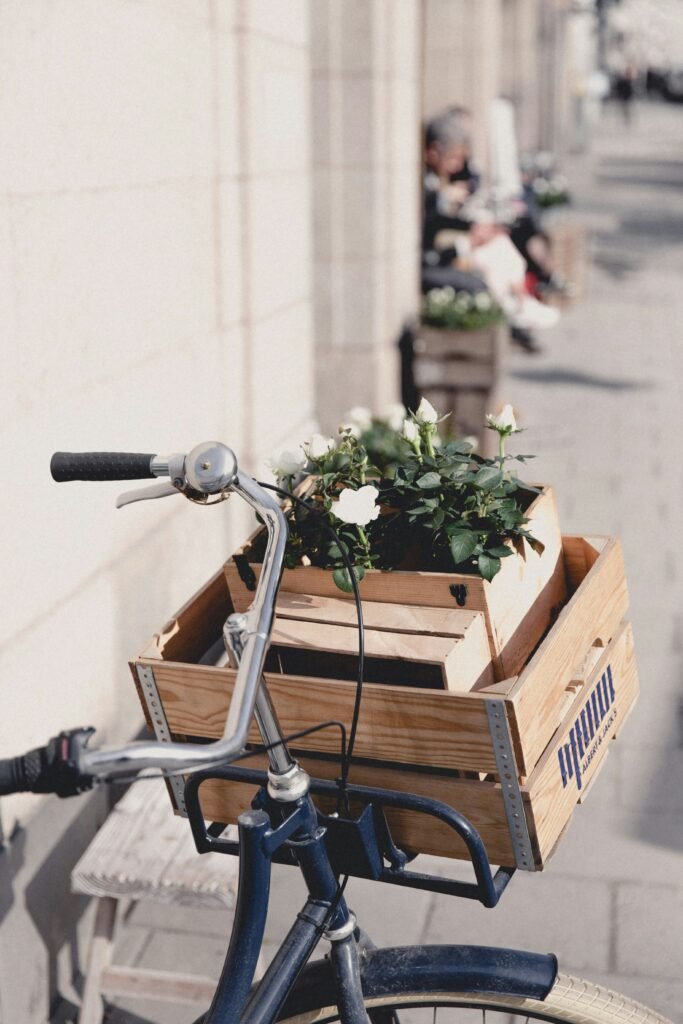In this article, you will be introduced to the fascinating world of crate production and the innovative eco-friendly alternatives that are being explored. As concerns about the environment continue to grow, businesses are increasingly seeking sustainable solutions in all aspects of their operations, including the production of crates. With a focus on reducing waste, conserving resources, and minimizing the carbon footprint, this article will take you on a journey to discover the exciting advancements being made in this industry. Get ready to be inspired by the creative ways in which crate production is becoming more environmentally conscious.
Introduction
When it comes to crate production, adopting eco-friendly alternatives not only benefits the environment but also contributes to a more sustainable future. By reducing our carbon footprint, conserving natural resources, improving air and water quality, and minimizing waste and landfill impact, we can make a positive impact on our planet. In this article, we will explore the various benefits of using eco-friendly alternatives in crate production and discuss different sustainable materials, biodegradable options, reusable and recyclable crates, innovative designs, eco-friendly coatings and treatments, integration of recycled materials, and collaboration with local communities.
Benefits of Using Eco-Friendly Alternatives
Reduced carbon footprint
Choosing eco-friendly alternatives in crate production helps reduce the carbon footprint associated with manufacturing processes. By using sustainable materials and implementing energy-saving practices, harmful greenhouse gas emissions can be minimized, leading to a healthier planet.
Conservation of natural resources
By opting for eco-friendly alternatives, we can contribute to the conservation of natural resources. Sustainable materials that are responsibly sourced, such as bamboo crates, recycled plastic crates, and paper-based crates, help minimize the depletion of finite resources while still providing functional and durable solutions.
Improved air and water quality
Traditional crate production methods often involve the use of chemicals and pollutants that can negatively impact air and water quality. However, eco-friendly alternatives, like biodegradable crate materials derived from plant-based sources, natural fiber-based crates, and starch-based crates, offer a cleaner and greener option that minimizes harm to both the environment and human health.
Reduced waste and landfill impact
The use of eco-friendly alternatives in crate production also plays a significant role in reducing waste and landfill impact. Reusable and recyclable crates, such as plastic crates with an extended lifespan, steel crates, and cardboard crates, allow for multiple uses and can be responsibly disposed of at the end of their lifecycle. This not only reduces the amount of waste being sent to landfills but also avoids the need for constant production of new crates.

This image is property of images.unsplash.com.
1. Sustainable Materials
Bamboo crates
Bamboo is a highly sustainable and fast-growing material that offers an excellent alternative for crate production. Its natural strength and durability make it suitable for various applications, and its rapid growth rate ensures a consistent and renewable supply. Bamboo crates are not only eco-friendly but also aesthetically pleasing, adding a touch of natural beauty to any environment.
Recycled plastic crates
Utilizing recycled plastic in crate production can help divert plastic waste from landfills. By transforming post-consumer or post-industrial plastic into sturdy and functional crates, we can reduce the demand for virgin plastic production. Recycled plastic crates offer the benefit of reducing pollution while still providing a reliable packaging solution.
Paper-based crates
Paper-based crates are an eco-friendly alternative that utilizes recycled or sustainably sourced paper fibers. These crates are lightweight yet strong and can be easily customized to meet specific needs. By using paper-based crates instead of traditional wooden ones, we can conserve natural resources and reduce deforestation.
2. Biodegradable Alternatives
Crate materials derived from plant-based sources
Biodegradable crate materials derived from plant-based sources, such as cornstarch or sugarcane fiber, offer an excellent solution for those seeking environmentally friendly options. These crates can break down naturally over time, leaving behind minimal waste. Moreover, they often have a lower carbon footprint compared to traditional crates, as they rely on renewable resources.
Natural fiber-based crates
Natural fiber-based crates, made from materials like jute or hemp, are another biodegradable alternative. These crates have excellent strength and durability, making them suitable for various applications. As natural fibers are renewable and compostable, they provide a sustainable option for crate production.
Starch-based crates
Starch-based crates are biodegradable and often produced from renewable resources like corn or potatoes. These crates offer a lightweight and versatile packaging solution while minimizing the use of fossil fuels. Starch-based crates can break down naturally, reducing waste and environmental impact.

This image is property of images.unsplash.com.
3. Reusable and Recyclable Crates
Plastic crates with extended lifespan
Choosing plastic crates with an extended lifespan helps reduce waste and maximize the value of resources. These crates are designed to be durable and resistant to wear and tear, allowing for multiple uses and prolonged lifespans. By investing in high-quality, reusable plastic crates, we can minimize the need for constant production and disposal.
Steel crates
Steel crates are a long-lasting and highly durable option for crate production. Due to their robust nature, they can withstand heavy loads and provide secure storage. Steel is also a highly recyclable material, making it a sustainable choice that contributes to the circular economy.
Cardboard crates
Cardboard crates offer a lightweight and economical solution for various packaging needs. They are made from renewable resources and can be easily recycled. Cardboard crates are not only biodegradable but also provide excellent insulation and protection for goods during transportation.
4. Innovative Designs
Modular crates
Modular crates are designed to be easily assembled and disassembled, promoting efficiency in storage and transportation. These crates can be customized according to specific requirements and offer flexibility in terms of size and shape. By utilizing modular crates, we can optimize space and reduce resource waste.
Foldable crates
Foldable crates are a space-saving solution that allows for compact storage when not in use. These crates can be folded flat, reducing the need for additional storage space. Foldable crates are lightweight and versatile, making them an eco-friendly alternative that minimizes logistical challenges.
Stackable crates
Stackable crates provide efficient storage solutions by allowing crates to be stacked one on top of another. This design maximizes vertical space utilization, reducing the need for additional storage areas. Stackable crates are commonly made from durable materials like plastic, making them reusable and long-lasting.
Nesting crates
Nesting crates are designed to fit inside one another when empty, significantly reducing the space required for storage or return shipping. This design feature optimizes logistics and reduces transportation costs. Nesting crates are often made from materials like plastic or metal, offering durability and longevity.

This image is property of images.unsplash.com.
5. Eco-Friendly Coatings and Treatments
Water-based paints and finishes
Using water-based paints and finishes in crate production offers a more environmentally friendly alternative to traditional solvent-based options. Water-based coatings have lower levels of volatile organic compounds (VOCs) and are less harmful to both human health and the environment. By adopting water-based solutions, we can further reduce our ecological footprint.
Non-toxic sealants
Non-toxic sealants provide a safe and eco-friendly alternative for crate production. These sealants are formulated without harmful chemicals and help protect the crate’s surface while being harmless to the environment. By choosing non-toxic sealants, we can ensure the safety of both consumers and the planet.
Natural oil treatments
Natural oil treatments offer a sustainable method of protecting and enhancing the appearance of wooden crates. Oils derived from renewable resources, such as linseed or tung oil, penetrate the wood, providing a durable and protective finish. Natural oil treatments are biodegradable and free from harmful chemicals, making them an eco-friendly alternative.
6. Integration of Recycled Materials
Crates made from recycled wood
Crates made from recycled wood help reduce the demand for new timber and minimize deforestation. By repurposing wood from old crates, construction waste, or other sources, we can create functional and durable packaging solutions while reducing environmental impact. Recycled wood crates also exhibit a unique rustic charm, adding character to any setting.
Plastic crates incorporating recycled plastic
Incorporating recycled plastic into crate production is an effective way to reduce plastic waste and conserve resources. By using post-consumer or post-industrial plastic, the demand for new plastic production can be significantly reduced. Plastic crates incorporating recycled plastic are strong, durable, and contribute to a more sustainable circular economy.
Mixed-material crates utilizing various recycled materials
Mixed-material crates that utilize various recycled materials offer a creative approach to eco-friendly crate production. By combining different recycled materials, such as cardboard, plastic, or metal, we can create unique and versatile crates that meet specific needs. This approach not only reduces waste but also maximizes the value of recyclable materials.
7. Collaboration with Local Communities
Sourcing crate materials from local suppliers
Collaborating with local suppliers for crate materials promotes sustainability and supports the local economy. By sourcing materials locally, we reduce the carbon footprint associated with transportation while also fostering relationships with nearby communities. Local sourcing also ensures that materials are responsibly and ethically harvested, promoting greater environmental stewardship.
Supporting sustainable livelihoods through crate production
Crate production can provide economic opportunities for local communities, especially when approached with sustainable practices. By supporting and investing in sustainable livelihoods, such as training and employment in crate production, we contribute to the well-being of individuals and communities. This creates a positive impact on both social and environmental aspects.
Promoting community involvement in eco-friendly crate production
Integrating community involvement in eco-friendly crate production enhances environmental awareness and fosters a sense of responsibility within local communities. By organizing workshops, educational programs, or community events centered around sustainable crate production, we promote engagement and empower individuals to make a difference. Through collaboration and shared values, we can collectively create a more sustainable future.
Conclusion
Exploring eco-friendly alternatives in crate production brings numerous benefits to the environment, as well as to businesses and communities. By reducing our carbon footprint, conserving natural resources, improving air and water quality, and minimizing waste and landfill impact, we can contribute to a more sustainable future. By adopting sustainable materials, biodegradable options, reusable and recyclable crates, innovative designs, eco-friendly coatings and treatments, integration of recycled materials, and collaboration with local communities, we can make a positive impact on our planet. Together, let’s embrace eco-friendly crate production and strive for a greener, more sustainable future.
